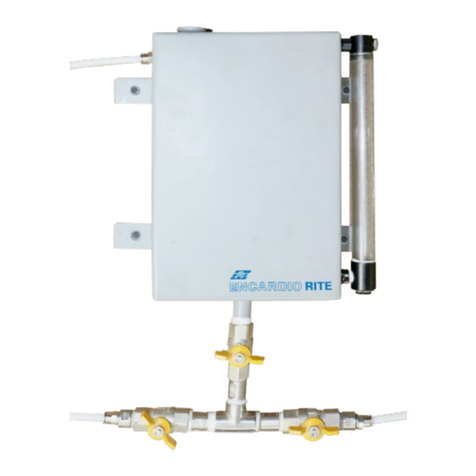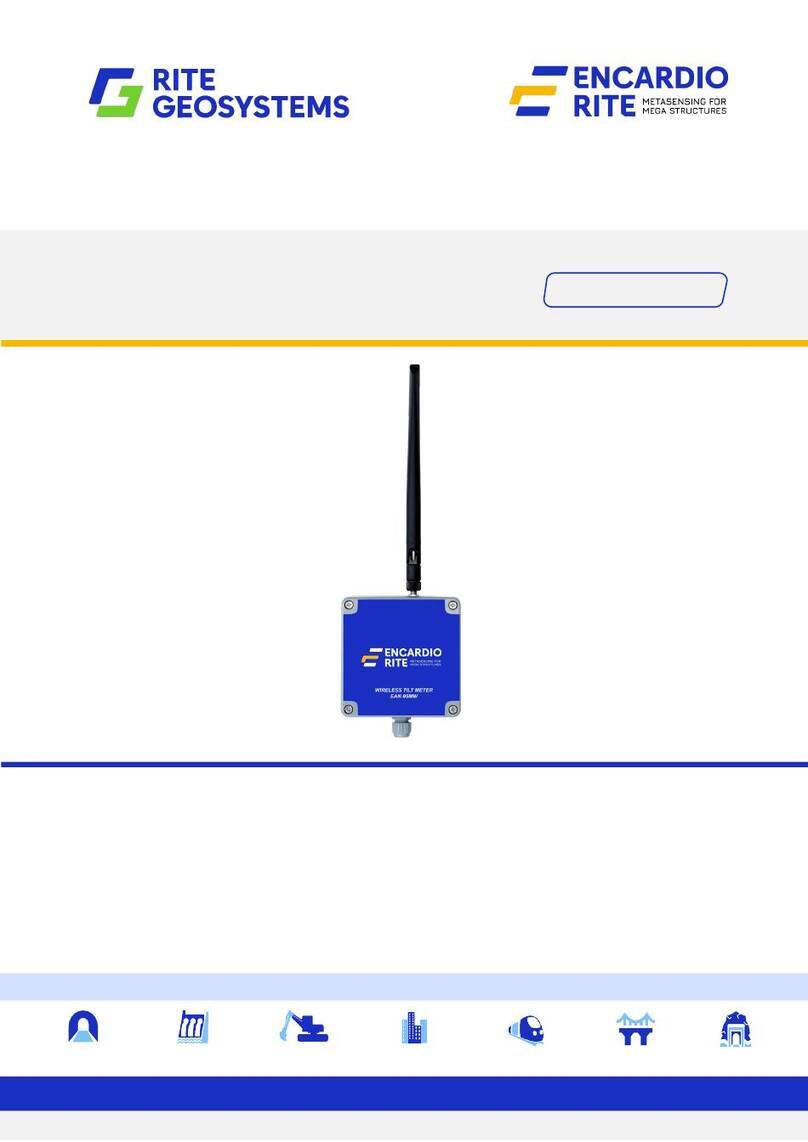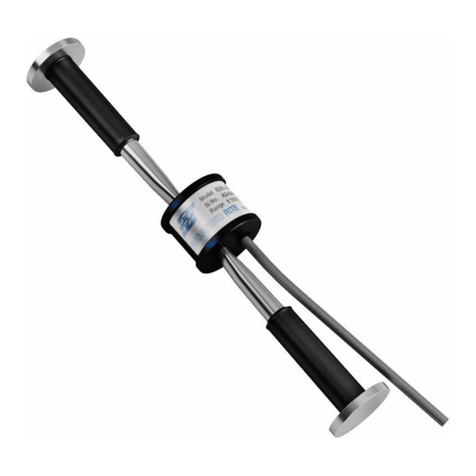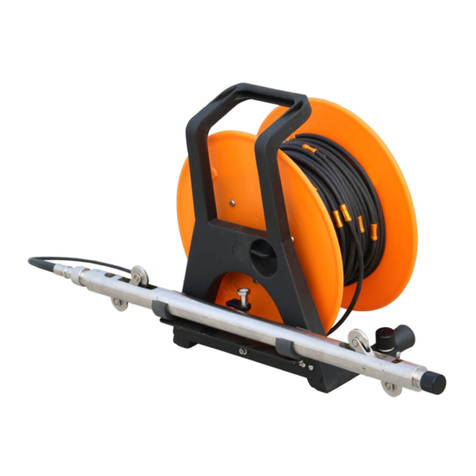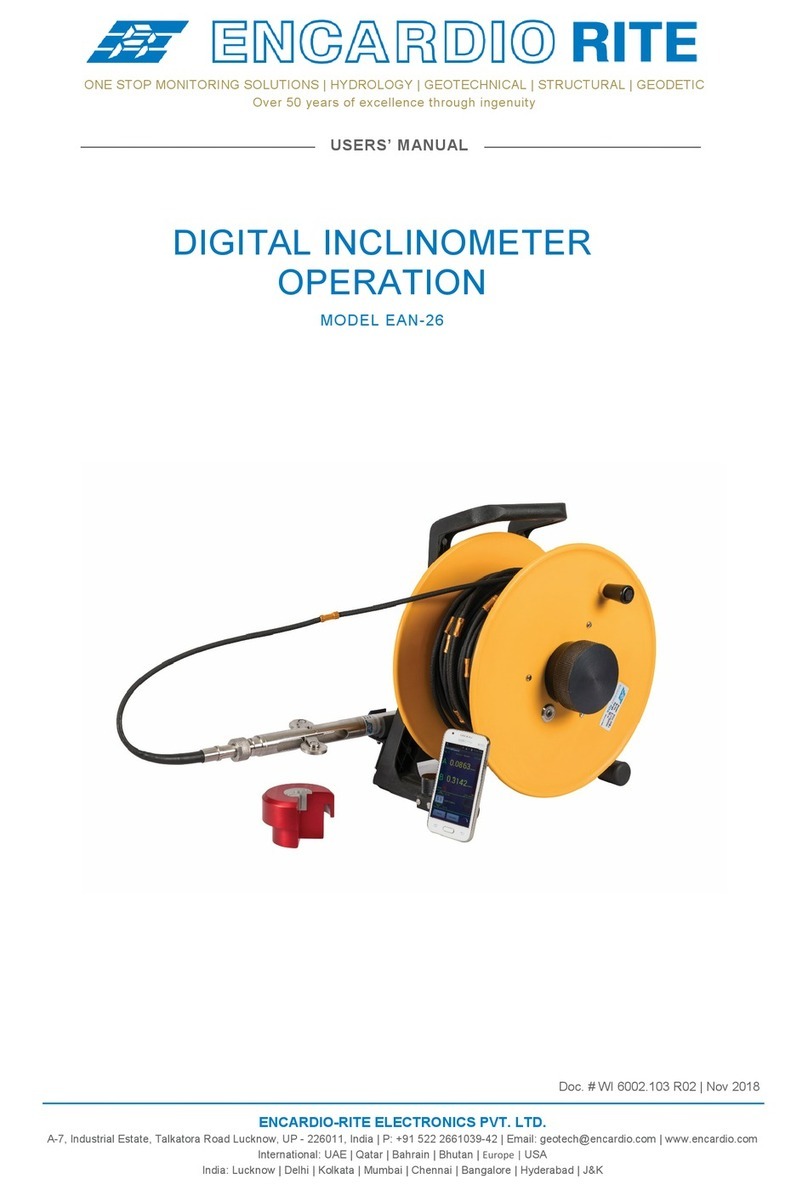
Users’ Manual EDS-71V/P Single point borehole extensometer
Page | 4
2 BOREHOLE EXTENSOMETER (BHE)
2.1 General Description
Borehole extensometer (BHE) measures extension (displacement) that takes place with time in a bored
hole or in several bored holes in a rock mass. The Encardio-rite BHE essentially consists of one anchor
and a reference plate. Anchor is set in same borehole or in different boreholes drilled adjacent to first
borehole. The BHE helps to accurately measure distance between anchor with respect to reference plate
and thus monitor with passage of time their relative displacement in respect to each other. It is usually
assumed anchor is in stable ground and so any change in anchor spacing is interpreted as sag of roof bed,
movement of side wall or slope, settlement of foundation etc.
Model EDS-71V/P BHE is specially designed to monitor a relative displacement of a single anchor
economically over any other borehole extensometer. At locations where access to mouth of borehole is
easily available, mechanical measurement of displacement by model EDS-64U/D is economical and
reliable. Displacement readings are taken by a micrometer depth gage by measuring depth of reference
button at near end of connecting rod from a reference plate.
Model EDS-71V/P borehole extensometer basically comprises following major sub-assemblies:
Reference head assembly
Vibrating wire displacement sensor/ potetiometric sensor
Connecting rod assembly (fibreglass or stainless steel AISI 410)
Anchor (reinforced bar or packer)
Grouting and vent tube as required
2.1.1 Reference head assembly
Refer to figures 2.1& 2.2 for details of single point BHE reference head assembly. Reference head
assembly is supplied packed from factory as per items listed in figure 2.1. The sensor is separately supplied
but it is very convenient to assemble it at site inside the reference head assembly along with the connecting
rod ends according to instructions given in § 3.
The reference head assembly consists of a flanged housing (5), an adaptor cum guide plate (6) is fixed to
the near end with help of M4x8 grub screws (8a). A grub screw M4x5 (8b) is provided in adopter cum guide
plate to fix the sensor. The reference plate (14) is fixed to guide plate with an allen head screw M5x12 and
one stainless steel centre pillar (13) in such a way that the holes marked (1,G.V )on reference plate is
aligned to the respective holes of guide plate. The holes 1,G,V are used for connecting rod, grout and vent
tube respectively. The removable cover (19) is threaded to the adopter cum guide plate (6) to protect the
entire assembly.
2.1.2 Displacement sensor
The Encardio-rite model EDE-VXX/PXX linear displacement sensor is used in model EDS-71V/P borehole
extensometer for transmitting the mechanical displacement to a remote observation room. It basically
consists of a vibrating wire sensor having a stroke of 50 , 100 or 150 mm.
The retractable shaft of the sensor having a male thread of M6x12 is connected to the connecting rod
through a link system. The sensor is provided with an integral 1 m long φ 4 mm four core cable with cores
in red, black, green and white. Red and black cores are for frequency signal while green and white are for
temperature monitoring through a thermistor.
Refer to data sheet 1085-03 P on model EDE-VXX vibrating wire linear displacement transducer (20) for
detailed description and specifications.
The potentiometric sensor model EDE-PXX is used in place of vibrating wire sensor if required.
